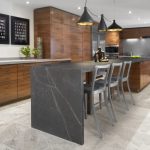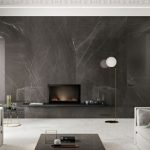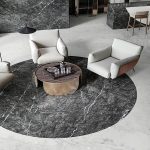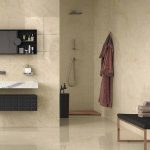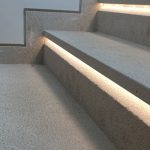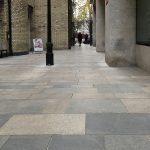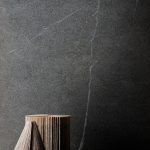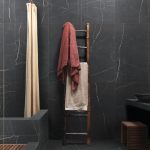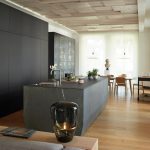Book-matching: Definition, Applications and Decorative Solutions
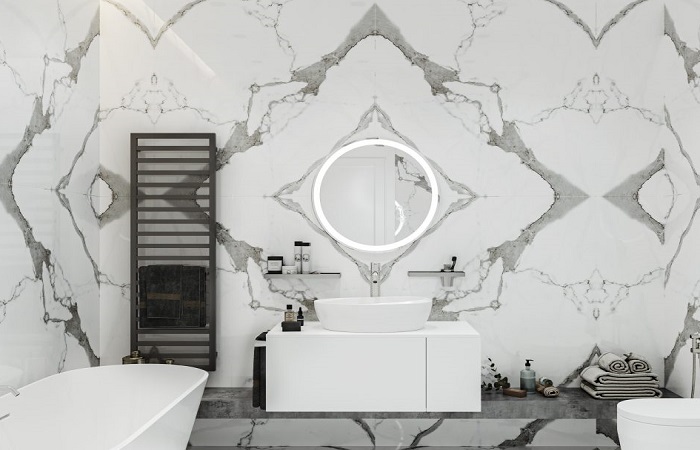
Book-matching: Definition, Applications and Decorative Solutions
Book-matching, definition, applications and decorative solutions are to be discussed here. Few natural materials are as durable, timeless or undeniably beautiful as marble. This is the reason why marble has always been considered as the ideal solution for any project aspiring to provide a sense of luxury. The patterns and veining on marble surfaces can be used in a variety of ways.
Book-matching Definition
Book-matching is the practice of matching two or more stone or marble surfaces, so that two adjoining surfaces mirror each other, giving the impression of an opened book. This stunning Book-matching effect is achieved when a block of veined marble is cut into slabs similar to a loaf of bread being cut into slices. Slabs are cut and numbered in a systematic order (1,2,3, 4…etc.). Book matched means that the first slab in a block is polished on one side and the slab right next to that is polished on the back side. If these slabs are laid out end-to-end, the pattern continues from one slab to the next with no break in the pattern. This creates a mirror image impression, much as the wings of a butterfly reflect each other.
Open Book or Book-Matching
A particularly prevalent technique of marble installation and display is the open book process, also known as book-matching. But what exactly does this technique entail? Which marbles are suitable for book-matching and for what types of application? Read on to learn everything you need to know about marble book-matching.
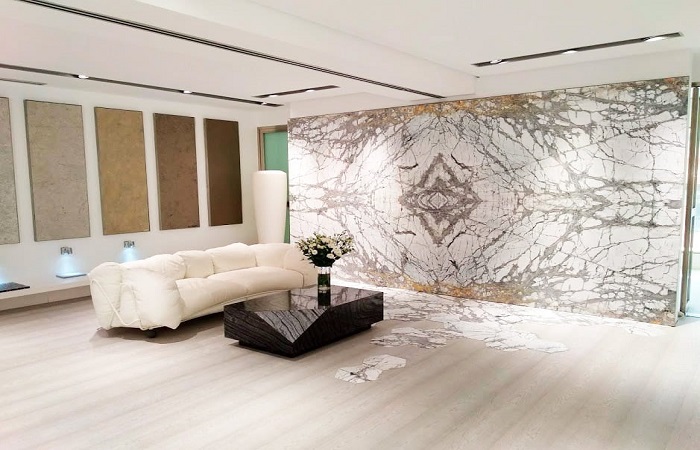
Marble Book-matching Technique
Book-matching or open book is a term with a long history in the marble industry, but is also used in the world of architects, decorators and constructors. Book-matching refers to the technique of matching two or four marble slabs, whose adjoining surfaces mirror each other, creating the impression of an open book. The patterns and veining of each marble surface are joined in a way that gives the impression of a single slab.
Marble Book-matching Process
It all starts by cutting marble blocks into symmetrical slabs. The slabs are then numbered and prepared for processing using the technique selected by the architects, decorators or managers of each project. Essentially, the first slab in a block is polished on one side, while the adjoining slab is polished on the back side. After processing, slabs are stored in successive order, and placed facing each other.
Installation of Book-matched Slabs
Once the slabs comprising the book are laid out one next to the other, they open up, creating a coherent and comprehensive whole of complementary patterns. It should be noted, however, that the veining and patterns of the slabs have to be matched in a way that genuinely conveys the impression of seamless continuity. The installation of book-matched slabs is a process that requires great precision, which is why it is highly advisable that it is undertaken only by experts.
Marbles Suitable for Book-matching
Physically, marble is composed of various inorganic minerals such as iron oxides that appear as grains or layers on the marble surface. These natural processes account for the unique patterns seen on marble slabs.
Marble Types Differ in Three Main Respects
On account of their unique formations, marble types differ in three main respects:
Background color(white, dark, colorful, etc)
Veining (parallel, diagonal or multidirectional veins)
Type of pattern (rich, shapely, austere, etc)
Book-matching and Unique Aesthetic Effect
In design, book-matching is selected when the intention is to create a unique aesthetic effect. This is why only marbles with surface veining and patterning are considered suitable for this technique. The directionality of the veins, the uniformity, dynamics or, more broadly, the aesthetics of the pattern can inspire architects, decorators and project managers to create different combinations. It is truly striking how different layouts of the same slabs used in this particular technique can result in diverse aesthetic effects.
Decorative Solutions Using Book-matched Marbles
Marble is a spellbinding stone, capable of giving a sense of luxury to any space. The book-matching technique can be used to achieve truly stunning results. Traditionally, architects and interior designers installed book-matched slabs on large surfaces and spaces that would do justice to their project. Book-matching applications are typically seen in hotel lobbies, corporate offices, restaurants and commercial buildings.
Ever-increasing Applications of Book-matching
In recent years, however, thanks to a more contemporary approach to interior design, book-matching has also been applied in smaller interiors. The variety of book-matching applications has been rapidly expanding in interior design, with marble emerging as the ultimate natural work of art. We are seeing an ever-increasing number of novel applications of book-matching. It is used, for example, in wall cladding and flooring in living rooms, kitchens, bedrooms, bathrooms and other spaces.
Book-matched Cost
Book-matched natural marble and stone is a notoriously expensive product. Because, the process required to manufacture it is time-consuming, labor intensive and wasteful. The book-matching technique can only be carried out using the finest quality marble, that which has defining attributes of clarity and definition, such as Pietra Grey Marble, which has a dark grey base and a few, very pronounced strong white lines.
Book-matched Requirements
Due to the colossal expense of book-matched natural marble and stone, we don’t see it very often. However, over the last few years, book-matching is the new chapter in the marble effect story.
Niayesh Stone
Therefore, as said earlier, it is the beautiful background veining and patterning of each marble. Rather than its technical attributes that determine whether it is suitable for an Open Book display. This is why uniformly colored marbles, despite their undeniable beauty and quality, are not recommended for book-matching. Book-matching looks equally amazing in both contemporary and traditional settings. Depending on the requirements of your specific project, we, at Niayesh Stone, can help you choose the Pietra Grey Marble slabs, recommend appropriate processing and advise you on installation.
To learn more about us, click here.
Send your price quotes directly to our WhatsApp through this Link: https://wa.link/ord5k8
Sources
www.davidscotttiles.com/the-art-of-bookmatching/#:~:text=Bookmatching%20is%20the%20practice%20of,bread%20being%20cut%20into%20slices
Article
Natural Stone Applications
- 22 December 2022
Iranian Stones Introduction According to Source and Quarry
- 21 December 2022
Technical Stone Introduction and Quarrying Procedures
- 21 December 2022
Categories
- blog757
- news1
- Specialized articles756

